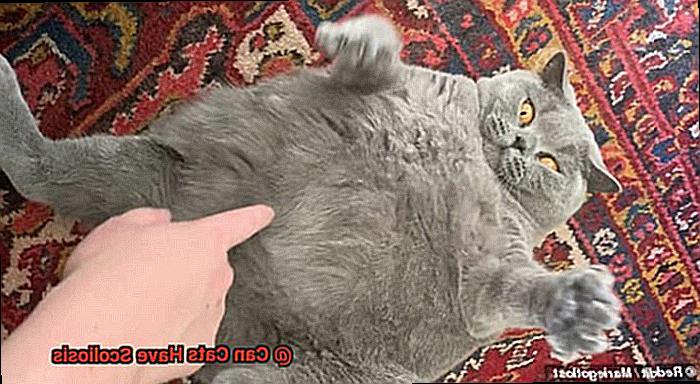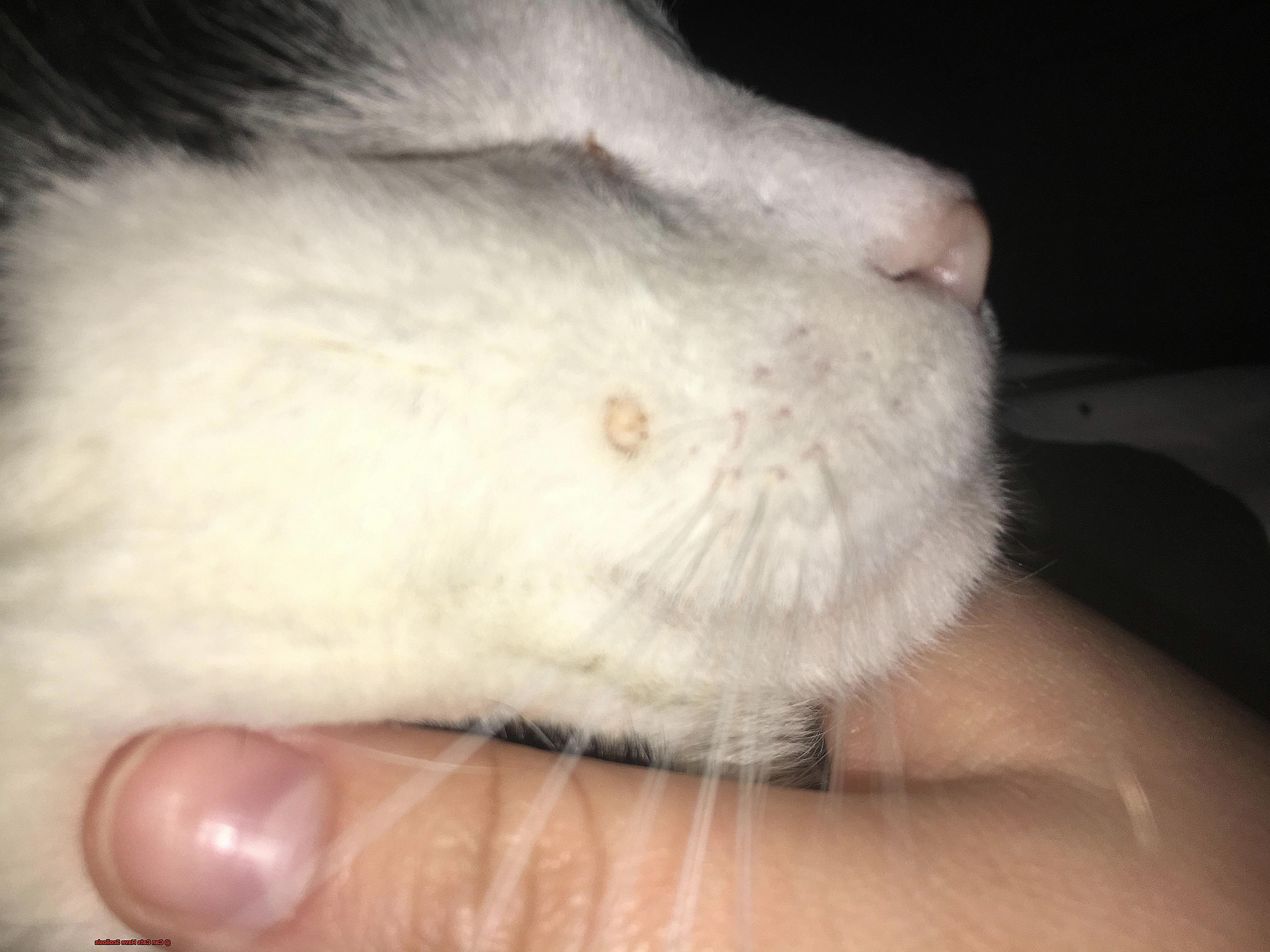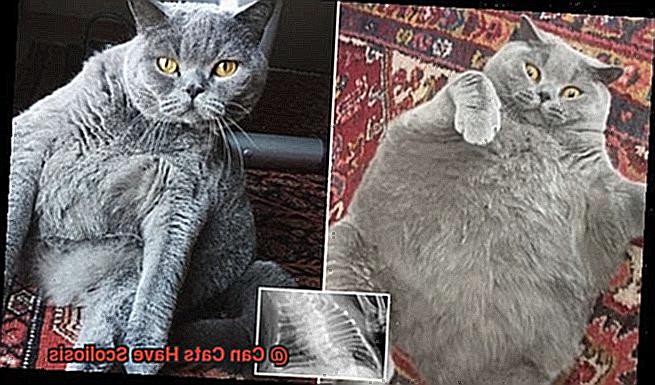Cats are fascinating creatures, known for their agility and flexibility. They can contort themselves into all sorts of interesting positions, but what happens when their spine becomes misaligned? This is where scoliosis comes in. But can cats actually have scoliosis? The answer is yes, and it’s a condition that every cat owner should be aware of.
Scoliosis is a spinal deformity that affects both humans and animals, including our feline friends. While it’s relatively rare in cats, understanding the causes, signs and treatment options available is crucial for maintaining your cat’s health and wellbeing.
In this blog post, we’ll delve into the intriguing topic of whether cats can have scoliosis. We’ll explore the various causes of this condition, from genetics to injury or trauma. We’ll also discuss how to diagnose scoliosis in cats and the treatment options available to alleviate any discomfort your furry friend may be experiencing.
But prevention is always better than cure. So we’ll also share some tips on how you can minimize the risk of your cat developing scoliosis in the first place. Whether you’re a seasoned cat parent or just curious about feline anatomy and health, this post will provide you with valuable insights on an important topic. So keep reading.
What is Scoliosis?

It’s a medical condition that affects the curvature of the spine, causing it to deviate from its normal shape. Although commonly seen in humans during adolescence, scoliosis can occur in any age group and for various reasons. And did you know that scoliosis can also affect your furry feline friend?
While scoliosis in cats is relatively rare, it can still occur due to congenital anomalies, spinal cord injuries, or degenerative diseases. Some cats may be born with the condition due to genetic factors or developmental abnormalities, while others may develop it after experiencing an injury or trauma to their spine.
Symptoms of scoliosis in cats can vary depending on the severity of the condition. Some cats may not show any noticeable symptoms, while others may experience pain, difficulty moving or walking, and even deformities in their appearance.
If you suspect your cat may have scoliosis, it’s crucial to consult with a veterinarian for proper diagnosis and treatment. The diagnosis typically involves a physical examination and diagnostic imaging tests such as X-rays or MRI scans. Treatment options for scoliosis in cats depend on the severity of the condition and may include pain management, physical therapy, and surgery in some cases.
It’s important to note that unlike in humans, scoliosis in cats is often asymptomatic and may not require treatment unless it causes discomfort or affects the cat’s mobility.
With proper care and management, cats with scoliosis can still live happy and comfortable lives.
Causes of Scoliosis in Cats
Although scoliosis is not as common in cats as it is in humans, it can still affect them and cause discomfort and pain.
One of the primary causes of scoliosis in cats is genetics. Certain breeds, such as Siamese and Devon Rex, are more likely to develop spinal deformities than others. Scoliosis may be present from birth and can worsen over time if inherited from one or both parents.
Trauma is another leading cause of scoliosis in cats. Falls, accidents, and other spinal injuries can damage the vertebrae and lead to curvature of the spine. Additionally, certain diseases or conditions like osteochondrodysplasia or hip dysplasia can cause abnormal bone and joint growth, resulting in spinal deformities.
Nutritional deficiencies or imbalances, hormonal imbalances, and exposure to toxins or chemicals are less common but still potential causes of scoliosis in cats. If you notice any changes in your cat’s posture or movement, or if they seem to be experiencing pain or discomfort, it’s important to bring them to a veterinarian for evaluation.
In some cases, scoliosis in cats may not cause any noticeable symptoms. However, it’s still essential to monitor your cat’s behavior and seek veterinary care if you suspect any issues with their spine.

If your cat is diagnosed with scoliosis, treatment may be necessary depending on the severity of the condition. Treatment options may include medication, physical therapy, surgery, or a combination of these approaches. Your veterinarian can help you determine the best course of action for your cat.
Symptoms of Scoliosis in Cats
Scoliosis is a condition that can affect cats just as it does humans, causing discomfort and pain. Early diagnosis and treatment are crucial to alleviate the condition. In this article, we will discuss the symptoms of scoliosis in cats, so you can be aware of any potential issues with your cat’s spine.

One of the most visible symptoms of scoliosis in cats is a visibly curved spine. This can be seen when the cat is standing up straight or lying down. In severe cases, the curvature may be so severe that it causes the cat to have a hunched posture, making it difficult for them to move around comfortably. Your cat may also have difficulty walking or running, and you may notice a change in their gait.
Another symptom of scoliosis in cats is an uneven gait. This means that the cat may walk or run with a limp and have difficulty maintaining their balance. This can be particularly concerning if your cat is prone to jumping or climbing as they may be at risk of falling and injuring themselves.
In severe cases, scoliosis can also cause breathing difficulties. The curvature of the spine puts pressure on the lungs, making it harder for the cat to breathe properly. If you notice that your cat is panting or struggling to catch their breath, it is important to seek veterinary attention immediately.
Lethargy is another symptom of scoliosis in cats. Your cat may seem less active than usual and may not want to play or move around as much. If you notice any changes in your cat’s behavior or activity level, it’s always best to seek veterinary care.
Diagnosing Scoliosis in Cats
Fortunately, there are a few tell-tale signs that can indicate scoliosis in felines.

The first and most apparent symptom is a visible curvature of your cat’s spine. You can detect this by gently running your hand along your cat’s back and feeling for any unusual bumps or irregularities. Another symptom to watch for is changes in your cat’s posture or gait. If you notice that your cat is walking with a hunched back or having difficulty moving its hind legs, it could be an indication of scoliosis.
Your cat may also experience pain when touched in certain areas or show reluctance when jumping or climbing stairs. These symptoms can be subtle, so it is crucial to pay close attention to your cat’s behavior and activity level.
If you suspect that your cat has scoliosis, don’t hesitate to take it to a veterinarian immediately. A vet will perform a thorough physical examination of your cat’s spine and may recommend radiographs or X-rays to confirm the diagnosis. In some cases, scoliosis in cats can be caused by underlying medical conditions such as trauma, infection, or cancer. Therefore, identifying the root cause is essential for effective treatment.
Treatment Options for Scoliosis in Cats
Unfortunately, just like humans, cats can also suffer from scoliosis, a condition that causes an abnormal curvature of the spine. Although most cases of scoliosis in cats do not require treatment, it’s essential to be aware of the available options in case your cat’s quality of life is affected.
For mild scoliosis cases in cats, physiotherapy is a common treatment option. This involves exercises and stretches that help improve mobility and reduce pain. Not only can physiotherapy help alleviate symptoms, but it can also prevent the condition from worsening.
In more severe cases of scoliosis, surgery may be necessary. Your veterinarian may recommend straightening the spine and stabilizing it with metal rods or screws if your cat’s quality of life is significantly affected by the condition. Surgery is a major decision, so make sure to discuss all options and potential risks with your vet.
Medication can also help manage pain and reduce swelling around the affected area. However, medication alone is not enough to treat scoliosis in cats and should always be used in conjunction with other treatment options.
It’s important to remember that treating scoliosis in cats requires a comprehensive approach that takes into account the severity of the condition and your cat’s overall health. Always consult with your veterinarian to determine which treatment option is best suited for your cat’s individual needs.
Prevention and Care for Cats with Scoliosis
While there’s no guaranteed way to prevent this condition, there are proactive steps you can take to reduce the likelihood of your furry friend developing it.

Keeping your cat at a healthy weight is vital. Overweight cats are more susceptible to various health issues, including scoliosis. Regular exercise and a wholesome diet can help keep your cat fit and healthy.
A safe living environment is also key to preventing scoliosis in cats. Ensure your home is free from potential hazards that could harm your cat’s spine. Regular veterinary check-ups can also help identify any potential issues before they become serious.
If your cat does develop scoliosis, don’t hesitate to seek veterinary care as soon as possible. Early diagnosis and treatment can help prevent the condition from worsening and improve your cat’s quality of life.
Treatment options for scoliosis in cats depend on the severity of the condition. In some cases, physical therapy and gentle exercise may be enough to alleviate symptoms and prevent further progression. However, more severe cases may require surgery to correct the spine’s alignment.
It’s essential to work closely with a veterinarian who specializes in treating spinal conditions to care for a cat with scoliosis. They can provide expert guidance on how best to manage your cat’s condition and improve their quality of life over time.
471i_6IZ0GM” >
Conclusion
In conclusion, it’s essential for cat owners to be aware of the possibility of scoliosis in their feline friends. Scoliosis is a spinal deformity that can affect both humans and animals, including cats. It may be caused by genetics, trauma, or degenerative diseases.
If you notice your cat displaying symptoms such as a visibly curved spine, an uneven gait, breathing difficulties, or lethargy, it’s crucial to seek veterinary attention promptly. Early diagnosis and treatment are vital to alleviate discomfort and prevent further progression.
The treatment options available for scoliosis in cats vary depending on the severity of the condition. They range from medication to physiotherapy or surgery. Prevention involves maintaining your cat at a healthy weight, providing regular exercise and a wholesome diet, and ensuring a safe living environment free from potential hazards.
Working closely with a veterinarian who specializes in treating spinal conditions is critical when managing your cat’s scoliosis over time. With proper care and management, cats with scoliosis can still live happy and comfortable lives.
In summary, understanding the causes, signs, and treatment options available for scoliosis in cats is crucial for maintaining your cat’s health and well-being.







